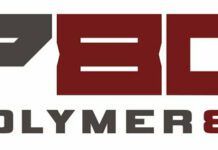Since February 2013 we have tested four subcompact 380 ACP pistols with factory-fitted laser sights – S&W Bodyguard, Ruger LCP-LM, SIG Sauer P238, and the Walther PK380. All received good ratings, but there were features that testers liked and didnt. At a readers request, we tested another Ruger LCP, this one with a Crimson Trace laser sight. In this pistol, we think Ruger created a good combination of sidearm and laser sight.
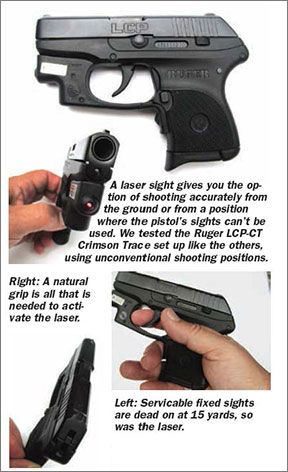
The Ruger LCP in various configurations has been reviewed by our test teams, and without a laser sight, the LCP generally gets good to excellent grades (A- to B+). With laser sights, particularly the Laser Max, the LCP received a B+. We ruled out the laser sight being a gadget early on in the testing, and the LCP with the Crimson Trace is no exception. Generally, we ask if the addition of a laser sight changes our mind about the pistol? Does the laser bulk up a pocket pistol? Is the laser an asset to the pistol?
The Ruger is a DAO (Double Action Only) handgun with minimal sights that are machined into the slide. It, like the others, is made for close work, so we tested for accuracy at 15 yards with open sights. The laser sight, however, was the feature we were more interested in. In real-life lethal confrontations, you may be shoved to the ground or in a position where use of the pistols sights is not an option. We tested the LCP-CT like the others, using unconventional shooting positions to get on target and stay on target. As in previous tests, we used D-1 tombstone-style targets and the same ammo brands: Hornadys XTP and Z-Max JHP and PPUs FMJ loads. The warning label affixed to the laser of the LCP warned not to point the laser beam in eyes as permanent eye damage can result. It employs a red Class IIIa laser. Laser beams can reflect off certain surfaces – TV or computer screens, mirrors, glass, etc. – so test the laser of an unloaded pistol so you can become accustomed to how the laser beam can react.
Out of the box, most testers liked how the LCP-CT was set up, from the finger-rest magazine floor plate (a flat floor plate is also included) to the Crimson Trace LG-431 laser sight. The laser was well integrated to the pistol, similar to the LCP-LM with the Laser Max sight. For left- or right-handed shooters, the activation button fell right under the middle finger. Gripping the pistol tightly activated the laser. Release some gripping pressure, and the laser turned off. Trying to fire the weapon without accidently turning the laser on was difficult, depending on how large your hand is and how dexterous you are. We saw no real reason why you would not want to fire the pistol without the laser activated. The laser was easily removed from the pistol if a user wanted to downgrade to the plain-Jane LCP.
The trigger broke cleanly, and that is one of the assets of the LCP. Like all small pistols that make an effort to be snag free, the slide of the LCP was difficult for some petite testers to rack, but once she had some practice, it became a non-issue. Like the LCP-LM, the LCP-CT could slip into a pants back or front pocket since there are no controls jutting out of the side of the pistol.
Included with the pistol is an Elite Survival pocket holster, which testers thought was a better value and more practical than a soft case. Constructed of non-slip Toughtek material on the outside and a nylon lining, the holster held the LCP in the upright position in a pants pocket and stayed in place when the gun was drawn. Using the holster, it was more difficult but the laser could be accidentally activated, which is what we found with all the laser sights.
It not only was snag-free and smooth on the outside at the range, the LCP-CT was a smooth operator altogether. It performed flawlessly with all ammo types. Holding the LCP-CT in a fist at belt buckle height and only using the red dot of the laser, we were able to group rounds at 2.75 inches on average.
Our Team Said: Because the slide did not lock open after the last round was fired, most testers reduced the LCP-CTs final grade by a half of a point. It had some muzzle flip, but the location of the laser activation button and the included holster made up points.
Written and photographed by Robert Sadowski, using evaluations from Gun Tests team testers.
A Few Odd Things for Glocks 21
We recently tested a Glock Model 21 in 45 ACP, and it turned out to rate a grade of A. We got some accessories with it that we recently had a chance to evaluate. These were the ReadyShot Target system, which allows for gun practice in the home; and an extended magazine that gives the Glock a capacity of 26+1 rounds.
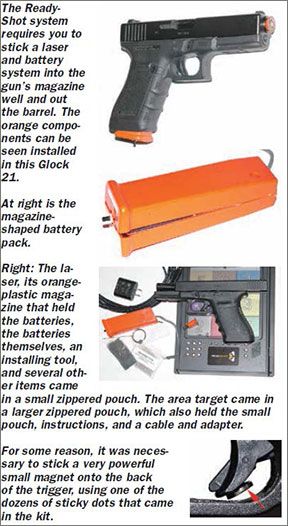
The long magazine had no name on it anywhere. Similar magazines are sold under the Scherer name, but we cant verify this was one of those. However, we can strongly suggest you not waste any of your money on this one. We had the devil of a time loading 26 rounds into it, using the loading assist that came with the big Glock. Then we stuck one up the spout, giving a full 27 rounds in the gun. Our first two shots verified that the thing would in fact feed, but then every shot jarred the magazine loose so it would not feed, and nearly dropped out of the gun. This is not what you want for self defense, nor, we believe, for fun shooting.
Our Team Said: Its no fun when the thing is that hard to load and then does not work.
Gun Tests Grade: F
Next up was the ReadyShot (ReadyShot.com) system. This is dedicated to the individual gun, because you have to stick a laser and battery system into the guns magazine well and out the barrel. Although there is a long list of guns on the company website to which this laser can be adapted, singularly missing is any mention of 1911-type pistols. The laser, its orange-plastic magazine that held the batteries, the batteries themselves, an installing tool, and several other items came in a small zippered pouch ($100, or $150 for guns other than Glocks). The area target, which you can rig to your computer, came in a larger zippered pouch, which also held the small pouch, instructions, and a cable and adapter ($200).
The instructions had good drawings and photos and were quite clear. We had no trouble getting the laser into the gun, but noted some questionable features along the way. First, the two pieces of orange plastic that made up the magazine had no hook at the bottom, only one screw at the top. This left it gaping, which didnt seem right. But it did work, and once inside the gun the problem went away.
There several tricks along the way that you had to learn. First was fishing the cord into the barrel, easy enough. Next was to grab the hook on top of the plastic magazine with a special tool, and position it just right. The instructions and photos made that easy, too. Then you had to insert the laser head onto the end of the wire, now protruding from the muzzle. With a little effort and using a small screwdriver as a clamp, we got that done. For some reason we dont understand, it was necessary to stick a very powerful small magnet onto the back of the trigger, using one of the dozens of sticky dots that came in the kit. Again, we had no real problems.
The laser was now functional. Press a switch on the bottom of the orange magazine, and every pull of the trigger (no slide cycling needed!) got a short burst of the laser on yonder wall. Then came the real problem. You had to align the laser with the sights by tweaking, twirling, extracting and reinserting the laser head into the muzzle of the Glock. We could never get it precisely where we wanted it, and when we got it close it would drift off. We were picky, being fairly good shots, and we wanted the laser to show its burst right on our sights. We never got that, and nearly twisted off the cable connector in trying.
Yet we got the laser fairly close, and we were able to use the gun against many spot targets around our quarters. We could also make decent hits where we called them on the electric target, so wed better tell you about that thing. The target ($200) has a hit area of about 6×6 inches. The easiest setup is to plug the target into the wall, using its USB cable into an adapter. This turns on the target, and you can immediately start nailing it with the gun. Each hit lights one of nine lights in a square or tic-tac-toe pattern.
The target system gives a bang sound and shows, with one of those nine lights, where you hit it. You can use overlays on the target, one for a game of tic-tac-toe (2 people), another with nine numerals. The instructions detail many games you can play with the target system. For us, one of the best games was the simplest. On a signal you draw your gun and shoot. The target then tells you where you hit, and by counting blinks, how many seconds it took you to hit. One of the more endearing games was that after a random delay, the target would play a sound of breaking glass (quietly), and time you to see how long it took you to retrieve your gun and nail the target with your (preset) allotted number of rounds.
When the target system is hooked to your computer, the counting is much more precise, and therefore far more worthwhile for the fast shooter. We were unable to evaluate the computer setup, however. We followed the instructions and got to the online website, but then we had our computer lock up. We dont know why, but our main box is not the newest thing out there, and we had just spent $250, and lost a week, to have a nasty virus removed. So we were not going to take any more chances at computer problems, and aborted the setup. We were far enough along to see that a computer setup would give a lot more information to the shooter.
We thought the laser in the gun was actually enough, all by itself. We spent a lot of time using the gun as one might use it in combat, quickly acquiring a random target around our room and lighting it up. The trick is to keep your focus on the front sight, and not look for the laser. Another slight problem was the laser could not keep up with our trigger finger. We could trip the trigger far faster than the laser could reset.
Our Team Said: In short, we liked the laser but could do without the target system. We can see the target would be more enjoyable for two or more shooters than for the solo shooter. One final gripe was that removing the batteries was nearly impossible without damaging the holder. That needs to be addressed, we thought. And we really wanted a way to fine-tune the laser strike.
Gun Tests Grade: C
Written and photographed by Ray Ordorica, using evaluations from Gun Tests team testers.
KillFlash SunGuard Kills Glare
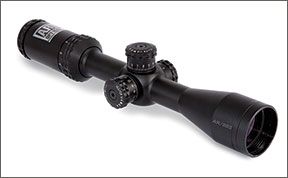
The KillFlash SunGuard Anti-Reflective device is a see-through cover for the objective lens of your scope that keeps anyone, man or beast, from being alerted by glare reflecting from the glass.
The KillFlash ARD (anti-reflective device) may not improve your marksmanship, but it can increase your odds of getting the shot you need. Its honeycomb-like construction is opaque in the hand, but somehow disappears when you look through the scope. Manufacturer Tenebraex claims its the xLume black coating that does the trick.
We first became interested in ARDs when we decided to mount a scope on a lever-action rifle. Concerned with getting the rifle into action as quickly as possible, we went looking for a way of protecting the scope without having to pop open a lens cap. What we found was an ARD made by Tenebraex, that screws into the objective lens. But the cost was about $100 from Camouflage.com, the only distributor we could find. A less expensive option found at SinclairIntl.com was an $18 Tenebraex ARD insert (Sinclair No. 749-002-672, $10) that was designed to fit inside of a Butler Creek flip up cover. This piece fit inside the number 8 Blizzard lens cover already on a Nikon Monarch 4-16X42mm scope, so we ended up saving about $72. The flip-up cap can be left open or removed by simply punching out the hinge pin. Either way, we now had a bargain ARD that would protect the scope and make us less visible.
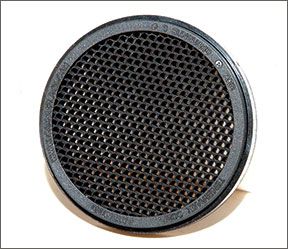
Our Team Said: Now that we know how well the Tenebraex KillFlash works, wed be more than willing to spend extra for the screw-in model should be more secure. For anyone concerned with telltale signature flash emanating from their scope, a Tenebraex KillFlash ARD is a must.
Gun Tests Grade: A
Written and photographed by Roger Eckstine, using evaluations from Gun Tests team testers.
Handgun Review: Almost a Lahti
We had a chance to test a Swedish M40, one of the Husqvarna-made, simplified copies of the Finnish Lahti pistol, and though we liked the gun, we found a few problems with it. We were told this M40 had the bolt accelerator for better winter use that was designed into the L35 Lahti, but that is incorrect. The Swedish copies of the Lahti left out the accelerator, and omitted the loaded-cartridge indicator on top of the chamber.
Our test gun was nicely finished, despite some coarse but good machine work. The bluing on our sample was about 95 percent. The plastic grips were like new, with clear Husqvarna logos on each side. The barrel inside was like new also. It was a hefty gun for the 9mm cartridge, we thought. The grip angle was very like that of the P08 Luger, which some love and some hate. The sight picture was good, though the sights were on the small side. The trigger pull was stiff but crisp.
We took a look inside the gun before we shot it. Takedown was essentially intuitive. Clear the gun, then press the muzzle vertically down on the table and twist the takedown lever on the left side of the frame 90 degrees so its pointing down. Pull the barrel and bolt assembly off forward. The bolt can then be removed from the carrier. The locking bracket will then come out of the carrier. It has an arrow pointing toward the muzzle to help reassembly. Nothing inside was remotely delicate, which is one reason the gun is so heavy. Reassembly is the reverse of the above, but we found a need to pull upward on the captive recoil spring to guide it back into the rear of the bolt.
The eight-round magazines were extremely hard to load. We resorted to using a spent cartridge hooked over the protruding finger-assist knob to be able to pull the follower down as we charged the magazine. We also had the rounds stick during reloading, the rim catching on the rear lip of the magazine. This was extremely frustrating. This must have been a terrible task in war, during winter, with frozen fingers.
On the range we found the gun pleasant and reasonably accurate. We shot it with WPA (Russian) 115-grain FMJ, and with RWS 124-grain FMJ Match Grade ammo. The Russian ammo averaged 3.1 inches at 15 yards. The RWS ammo did better, averaging 1.8 inches. The WPA ammo came out at 1150 fps, and the RWS at 1090 fps. We had one failure to feed during our limited shooting.
Our Team Said: We really didnt like the magazine-loading situation, nor the failure to feed. However, more shooting didnt give any more failures to feed. We thought this was an interesting pistol, well worth owning. However, the current prices dont make that easy. Weve seen them listed for $800 to $1200. If you think thats bad, the much scarcer and more highly refined genuine Lahti L-35 can easily top $2000. Just as with highly paid Finnish racing driver Kimi Rikknen, the real thing out of Finland costs a lot more than any clone.
Written and photographed by Ray Ordorica, using evaluations from Gun Tests team testers.
Shooting the Rossi Circuit Judge
In the great, ongoing grab for the various 45 LC/410-bore handguns, an interesting firearm has evolved from the originators, Taurus, who make the Judge. This new gun is the Rossi Circuit Judge, which is apparently made by Taurus and marketed by Rossi (RossiUSA.com). Our specific gun was the Rossi Circuit Judge Model SCJ4510 45 LC & 410-Bore, $684. Its a carbine-length revolving rifle capable of shooting any 45 LC loads, or any 2.75-inch or 3-inch .410 shot or mixed-projectile shells, any way you choose to load the cylinder. This five-shot firearm is light enough to be handy, and versatile enough that we believe experimenters will love it. We suspect an interested person could spend many months experimenting with varying loads of 45 LC and 410 shotshell persuasion. However, what we found with our testing, as you shall see, led us inevitably to one important conclusion: The purpose of shooting is hitting.
Our local FFL holder Joe Syczylo took one brief look into the open box at the Circuit Judge and said, Its going to burn your forward wrist. Then we took it out of the box and looked a bit closer, and there were the wrist guards below the front of the cylinder. Rossi had thought of that and had provided for it.
The Circuit Judge is basically the Judge handgun with a nicely done buttstock fitted to it, and an 18.5-inch barrel with a stocky, useful forend fitted to the front. Rossi has a series of these carbines that includes versions in 44 Mag, 28 gauge smoothbore (not available in all areas depending on local laws), and a convertible in 22 LR and 22 Magnum. If thats not enough, our test rifle is also available in stainless steel ($732), or blued with a plastic thumbhole stock. All but the smoothbore 28-gauge come with a scope-mounting rail attached to the top of the action. Please note there are no smoothbore versions of the 45/410 available in the U.S., so dont ask Rossi.
The sights on our test gun were two green dots at the back, and a red one at the front. These glowed when any light was on them. The rear sight was adjustable for windage and elevation by simple but sturdy means. We chose to use the iron sights for our testing, and they worked well enough. The dots were clearly visible with any light at all on them, though we wanted more width between the rear dots. A wide-angle V would be nice with that glowing red front sight, and itd be faster too.
The stock was plain wood, resembling birch, nicely stained, and well shaped with a dull finish on it. There was a thick trestle-style recoil pad, handy if you shoot lots of the hotter 410 loads. The stock had small sling swivels. Workmanship everywhere we looked was generally excellent. Cylinder lockup was tight, and the single- and double-action triggers were both quite good. Ejection was, to some extent, fouled by the stock, but we could live with it. The stock could be made thinner by the owner, if desired. The ejector poked the empties out only about an inch, but that was sufficient, we thought. Lockup was plenty tight, about as good as weve seen. There was zero motion of the cylinder in the just-fired position. One nasty bit was the lower edge of the left flash shield. It was sharp. Careful filing would fix it quickly.
We took the carbine to the range with a selection of 45 LC ammo first. We used Hornady Critical Defense 185-grain FTX, Winchester 225-grain Silvertip HP, and Winchester 255-grain RN lead loads. We shot the 45 LC loads from a seated position at 25 yards, and the shotshells from a variety of distances. In a nutshell, the three 45 LC loads averaged five-shot groups of 2.3 inches. Bench rested, they might have grouped a bit tighter, but clearly the gun can shoot well enough to hit with the 45 LC loads.
Then we tried #8 and #9 shotshells, and two modern versions of the old grape shot, 410 cases loaded with a variety of projectiles. These were another of Hornadys Critical Defense loads called the 410 Triple Defense. It had a slug and two balls. Then there was the Winchester PDX1 410 Defender, which had 4 disks and 16 BBs per shot. We also tried Winchester rifled slugs of one-fifth ounce, and while they were pretty hot, the accuracy was not so hot. We got 5-inch groups at 25 yards, not enough for us to take that combination deer hunting.
We tried #8 shot at a sheet of typing paper, 8.5 by 11 inches, 10 yards away, and quickly found that a grouse-size bird might not even be hit at that range. However, with #9 shot at the same distance, dinner would be on the table. We would not happily stretch the range of the #9 shot beyond 10 yards.
Hornadys Critical defense 410 load put three holes in the paper 1.8 inches apart at a range of 10 yards. At 20 yards, none of the three projectiles hit the typing paper, but didnt miss by much. Two of the holes from the balls were high, centered, about 2 inches above the top of the paper target and the third hole, from the slug, was a foot low and left. These all would likely have struck a human torso, but we would not like to take our chances at that 20-yard range. Up close, there would be no problems.
The Winchester PDX1 410 Defender load at 10 yards put five big holes (one from the wad) on the paper, well spread out, but of the 16 BBs in the load, only five struck the box, which measured 12 by 16 inches. In other words, at 10 yards the small disks would hit an opponent, but most of the BBs would not. Only three of the five that hit the box struck the typing paper target, in fact. We tried the Winchester load at 5 yards, and here all the stuff struck the box. But all the disks had spread to only 1.2 inches, and we could cover them with our thumb. Our first question was, would the Winchester loads lightweight disks penetrate sufficiently? With the Hornady triple-projectile load, the mass and shape of each would tend to give good penetration, and you still have the benefit of multiple hits at close range.
The rifled slugs might be very good for self defense, as long as the gun is sighted to put them where you want them. We found a significant discrepancy between the impact point of the 45 LC loads and the slugs. We also noted that with the different 45 LC bullet weights.
So, which 410 load would we use for self defense? None of the above. If we wanted to disable an opponent reliably, wed load an Elmer Keith 260 or LBT hard-cast slug of 280 up to 300 grains in 45 LC cases and call it a good job. We did a quick test at 25 yards with the 255-grain Winchester lead-bullet load, and were able to put all our shots rapidly into about 5 inches at that range. That beats any and all of the 410 loads, in our opinion, hands down. And theyd work even better at close range. Remember, this is a double-action firearm, and you can shoot five shots mighty quickly if needed.
As noted, if you are within 10 yards of, say, a sitting game bird the size of a ptarmigan or grouse, you can count on hitting it effectively with a charge of #9 shot. If you use #8, dont expect to hit, much less bag, the bird. But if you have the rifle sighted in with good 45 LC ammo, you could hit a sitting rabbit from a far greater range than 10 yards. We believe this gun would not be too good against flying birds unless youre an excellent wing shot and have done your homework with the Rossi.
If youre within 10 yards of someone bent on doing you serious bodily harm, you can expect to hit them with most of the stuff slung out by todays 410-caliber versions of the ancient grape shot. We recall Samuel White Bakers encounter with a buffalo when he had no more bullets available, so he stuffed a handful of change down the bore of his muzzle-loading rifle, waited until the buff was at very close range, and succeeded in stopping its charge. The modern defensive 410 ammo is clever, and nicely marketed. But if youre a bit too far away, the lightness of the projectiles, never mind if they hit, may not be enough to incapacitate a determined opponent. Would the four disks of the Winchester PDX1 load penetrate even at close range? They might not, but were sure the slap of all those bits of plated lead – and at least a few of the BBs – would be devastating, whether or not they penetrated deeply.
Throughout all our testing, the Rossi performed perfectly. There were no problems, and we came to like the gun quite a bit. One more note on our choice of heavy bullets in 45 LC. We noted the hot Hornady 185-grain load dropped 3 inches when we moved back to 50 yards. But the heavy 255-grain bullets only dropped 1 inch over the same distance. Short, fast bullets lose their speed quickly. Long ones dont, which is why we would choose a heavy bullet for our ideal load for this gun.
Our Team Said: The bottom line is that if we owned the Circuit Judge, we might stock up some #9 shot for close-range birds, but would have little or no use for the 410 self-defense loads weve tested. If we had to use one of the 410 loads, wed go with the 2- or 3-ball 00 buckshot, which have proven to be effective at longer range. They would be even more effective at close range, we believe. But our main load would be a 45 LC one, with a heavy, hard-cast bullet. Wed sight the gun in with that and call it good. We think a lot of people will buy one of these Rossi long Judges just for the fun of it. They are indeed handy, easy to carry, not too heavy, and they can provide a lot of shooting fun. The Circuit Judge is comfortable to shoot, easy to load and unload, and a smooth-operating gun in all ways. Its not exactly inexpensive, but theres not much else quite like it.
Written and photographed by Ray Ordorica, using evaluations from Gun Tests team testers.





























